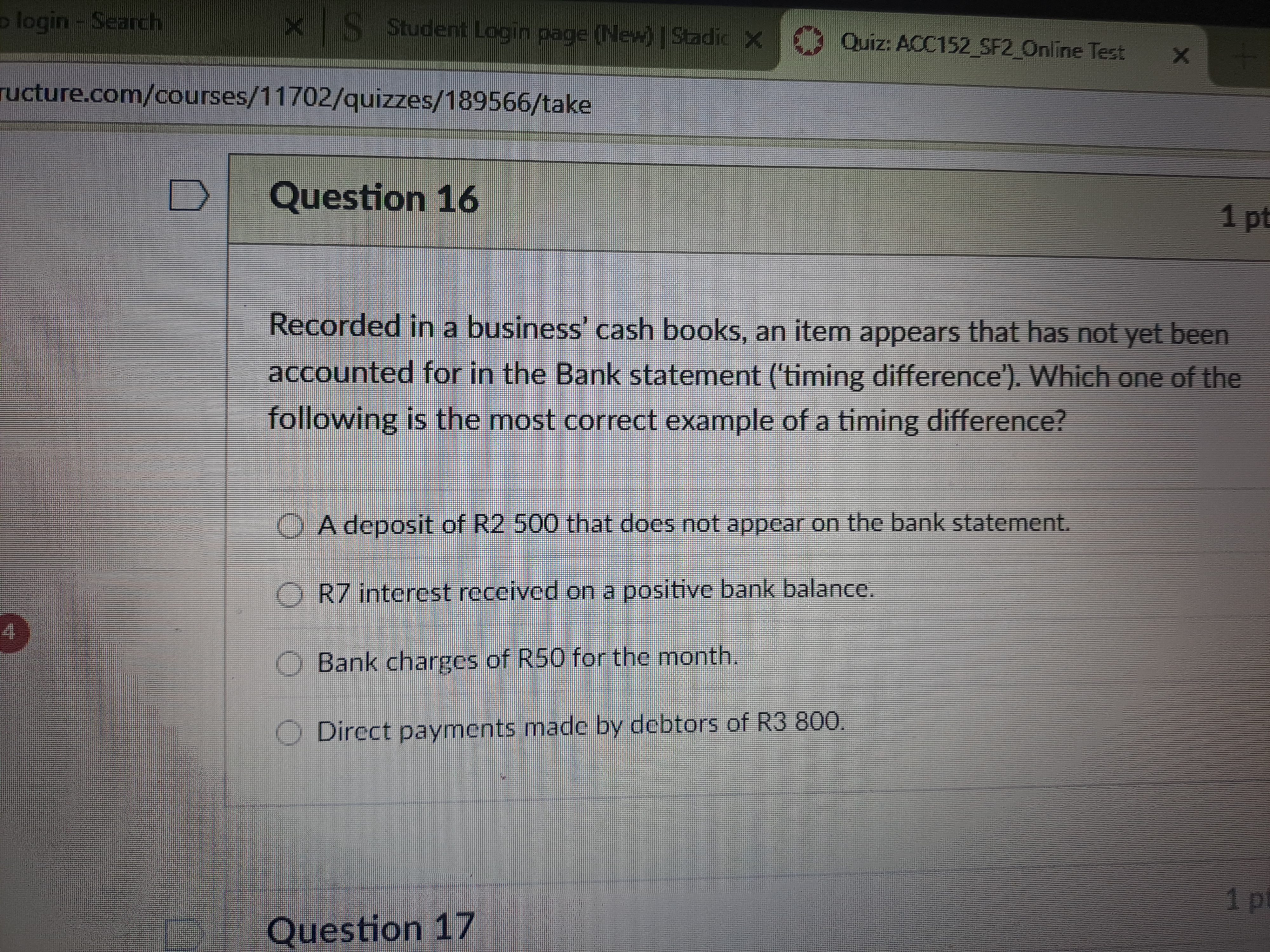Recorded in a business’ cash books, an item appears that has not yet been accounted for in the Bank statement ('timing difference'). Which one of the following is the most correct... Recorded in a business’ cash books, an item appears that has not yet been accounted for in the Bank statement ('timing difference'). Which one of the following is the most correct example of a timing difference?

Understand the Problem
The question is asking for an example of a 'timing difference' in accounting, specifically within the context of bank statements and cash books. Timing differences occur when an item is recorded in the cash books but does not yet appear on the bank statement.
Answer
A deposit of R2 500 that does not appear on the bank statement.
The final answer is: A deposit of R2 500 that does not appear on the bank statement.
Answer for screen readers
The final answer is: A deposit of R2 500 that does not appear on the bank statement.
More Information
A timing difference occurs when a transaction is recorded in the books of accounts but not yet reflected in the bank statement. Deposits not yet appearing on the bank statement are typical examples.
Tips
Common mistakes include confusing timing differences with reconciliatory items like bank charges or direct debits, which are not timing issues but rather adjustments.
Sources
- Solved Example on Timing Differences - studocu.com
AI-generated content may contain errors. Please verify critical information